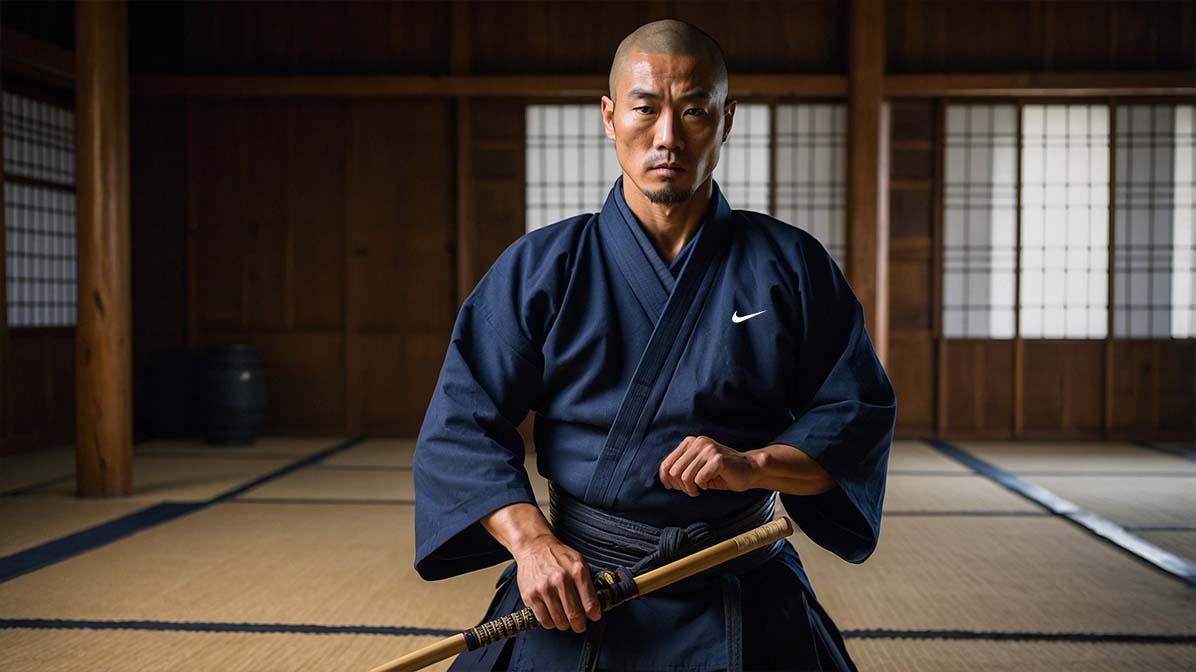The Spartan Agoge

Historical Background
The Spartan Agoge was a rigorous education and training program designed to mold young Spartan boys into elite warriors. Starting at the age of seven, boys were taken from their families and subjected to intense physical and mental challenges that emphasized endurance, strength, and discipline.
Key Elements
- Endurance Training: Spartan boys were required to run long distances, often barefoot, to build stamina and resilience.
- Strength Building: Exercises like push-ups, pull-ups, and weightlifting were integral to developing muscular strength.
- Combat Skills: Martial arts, wrestling, and weapon training were essential components of the Agoge.
- Survival Skills: Boys were taught to survive with minimal resources, often forced to steal food without getting caught.
Modern Application
To incorporate the Spartan Agoge principles into your fitness routine:
- Endurance Workouts: Include long-distance running or high-intensity interval training (HIIT) to build stamina.
- Strength Training: Focus on bodyweight exercises and weightlifting to develop muscular strength.
- Combat Training: Consider taking up martial arts or boxing to improve combat skills and overall fitness.
- Survival Challenges: Engage in outdoor activities like hiking or obstacle courses that require problem-solving and resourcefulness.
The Roman Legionary Training

Historical Background
Roman legionaries were some of the most disciplined and effective soldiers in ancient history. Their training regimen was designed to prepare them for the physical and mental demands of military campaigns, which often involved long marches, constructing fortifications, and engaging in combat.
Key Elements
- Marching: Legionaries were required to march long distances carrying heavy packs, building endurance and strength.
- Weapon Training: Regular drills with swords, spears, and shields honed their combat skills.
- Construction Work: Building fortifications and camps improved their physical strength and teamwork.
- Discipline: Strict adherence to routines and orders instilled discipline and mental toughness.
Modern Application
To incorporate the Roman legionary training principles into your fitness routine:
- Ruck Marches: Integrate ruck marches (walking with a weighted backpack) into your workout to build endurance and strength.
- Combat Drills: Practice martial arts or join a fencing club to improve hand-eye coordination and combat skills.
- Functional Fitness: Engage in functional fitness exercises that mimic construction work, such as carrying heavy objects or performing sandbag workouts.
- Discipline and Routine: Establish a consistent workout routine and stick to it, focusing on both physical and mental discipline.
The Samurai Training

Historical Background
Samurai warriors in feudal Japan underwent rigorous training to master the art of war and the way of the warrior, known as Bushido. Their training focused on developing physical strength, martial skills, and mental discipline.
Key Elements
- Martial Arts: Samurai trained extensively in various martial arts, including swordsmanship (Kenjutsu), archery (Kyudo), and unarmed combat (Jujutsu).
- Meditation: Meditation and mindfulness practices were essential for mental clarity and focus.
- Endurance: Samurai engaged in long hours of physical training to build stamina and resilience.
- Discipline and Honor: Adherence to the Bushido code instilled a sense of duty, honor, and discipline.
Modern Application
To incorporate Samurai training principles into your fitness routine:
- Martial Arts Training: Join a martial arts dojo and practice disciplines like Kendo, Kyudo, or Jujutsu to improve combat skills and physical fitness.
- Meditation and Mindfulness: Integrate meditation or mindfulness practices into your daily routine to enhance mental clarity and focus.
- Endurance Workouts: Include long-duration exercises like running, cycling, or swimming to build endurance.
- Discipline and Routine: Embrace a disciplined approach to your fitness routine, adhering to a strict schedule and focusing on personal growth and honor.
The British SAS Selection Process

Historical Background
The British Special Air Service (SAS) is known for its grueling selection process, designed to identify and train the most physically and mentally resilient soldiers. The selection process includes intense physical challenges, survival skills, and mental endurance tests.
Key Elements
- Endurance and Stamina: Long-distance runs, hikes, and obstacle courses test physical endurance.
- Strength and Conditioning: Weightlifting, bodyweight exercises, and functional fitness build strength and overall conditioning.
- Survival Skills: Candidates are tested on their ability to survive in harsh environments with limited resources.
- Mental Toughness: Psychological assessments and stress tests evaluate mental resilience and decision-making under pressure.
Modern Application
To incorporate the British SAS selection principles into your fitness routine:
- Endurance Training: Include long-distance running, hiking, and obstacle course racing in your workouts to build stamina and endurance.
- Strength and Conditioning: Focus on a combination of weightlifting, bodyweight exercises, and functional fitness to develop overall strength and conditioning.
- Survival Skills: Engage in outdoor survival training, such as camping, navigation, and bushcraft skills.
- Mental Toughness: Challenge yourself with activities that push your mental limits, such as timed workouts, high-intensity interval training, and mindfulness practices.
The Navy SEAL Training

Historical Background
The U.S. Navy SEALs are renowned for their intense training program, known as Basic Underwater Demolition/SEAL (BUD/S) training. This program is designed to prepare candidates for the physical and mental challenges of special operations missions.
Key Elements
- Physical Conditioning: Intense physical workouts, including running, swimming, calisthenics, and weightlifting, build overall fitness.
- Water Competency: Training in and around water, including swimming, diving, and surf passage, is essential for developing water confidence.
- Teamwork and Leadership: Candidates are trained to work effectively in teams and develop leadership skills under pressure.
- Mental Toughness: Stressful scenarios and mental challenges test candidates’ resilience and determination.
Modern Application
To incorporate Navy SEAL training principles into your fitness routine:
- Physical Conditioning: Incorporate a mix of running, swimming, calisthenics, and weightlifting to develop overall fitness.
- Water Training: Practice swimming, diving, and other water-based activities to build water confidence and competency.
- Teamwork and Leadership: Participate in team sports or group fitness classes to develop teamwork and leadership skills.
- Mental Toughness: Challenge yourself with high-intensity workouts, timed challenges, and stress tests to build mental resilience.
Incorporating Historical Training Principles into Modern Fitness
Periodization
Periodization involves dividing your training program into distinct phases, each focusing on specific fitness components. This method, used by many historical training programs, helps prevent overtraining and ensures balanced development.
How to Implement:
- Macrocycles: Plan your training year with macrocycles (e.g., 3-4 months) focusing on different goals like strength, endurance, or hypertrophy.
- Mesocycles: Break down macrocycles into mesocycles (e.g., 4-6 weeks) to focus on specific aspects of fitness.
- Microcycles: Weekly training plans (microcycles) should include varied workouts to keep training fresh and effective.
Recovery and Nutrition
Proper recovery and nutrition are critical to sustaining high-intensity training and achieving optimal results. Historical warriors often emphasized recovery through rest, nutrition, and mental relaxation.
Recovery Tips:
- Sleep: Ensure 7-9 hours of quality sleep per night.
- Nutrition: Consume a balanced diet rich in proteins, carbohydrates, and healthy fats. Focus on whole foods like lean meats, vegetables, fruits, and whole grains.
- Hydration: Drink plenty of water throughout the day to stay hydrated, especially before, during, and after workouts.
- Active Recovery: Incorporate low-intensity activities like walking, yoga, or stretching on rest days to promote blood flow and recovery.

Mental Resilience
Building mental resilience is crucial for overcoming the toughest fitness challenges. Historical training programs often included elements designed to test and strengthen the mind.
Mental Resilience Tips:
- Mindfulness and Meditation: Practice mindfulness and meditation to improve focus and reduce stress.
- Visualization: Use visualization techniques to mentally rehearse challenging workouts and visualize success.
- Positive Self-Talk: Replace negative thoughts with positive affirmations and constructive self-talk.
- Goal Setting: Set realistic and achievable goals, and celebrate your progress along the way.
Customizing Your Training Program
Assessing Your Fitness Level
Before starting any new training program, it’s essential to assess your current fitness level. This will help you tailor the workouts to your abilities and avoid injury.
Fitness Assessment Tips:
- Cardiovascular Endurance: Perform a timed run or cycle to gauge your cardiovascular fitness.
- Muscular Strength: Test your strength with exercises like push-ups, pull-ups, and squats.
- Flexibility: Assess your flexibility with stretches like the sit-and-reach test.
- Body Composition: Measure your body fat percentage and muscle mass using calipers or a body composition scale.
Setting SMART Goals
Setting Specific, Measurable, Achievable, Relevant, and Time-bound (SMART) goals can help you stay motivated and track your progress.
SMART Goal Tips:
- Specific: Define clear and specific goals, such as “Run a 5K in under 25 minutes.”
- Measurable: Ensure your goals are measurable, so you can track your progress.
- Achievable: Set realistic goals that challenge you but are attainable.
- Relevant: Choose goals that are relevant to your overall fitness objectives.
- Time-bound: Set deadlines for achieving your goals to maintain focus and urgency.
Emulating history’s hardest P.E. programs can help modern gentlemen conquer the toughest fitness challenges. By incorporating elements from the Spartan Agoge, Roman Legionary training, Samurai training, British SAS selection, and Navy SEAL training into your fitness routine, you can build a body that’s strong, resilient, and prepared for any challenge. Remember to approach your training with discipline, dedication, and a focus on personal growth. With these principles in mind, you’ll be well on your way to achieving peak physical condition and embracing the spirit of a true gentleman.













